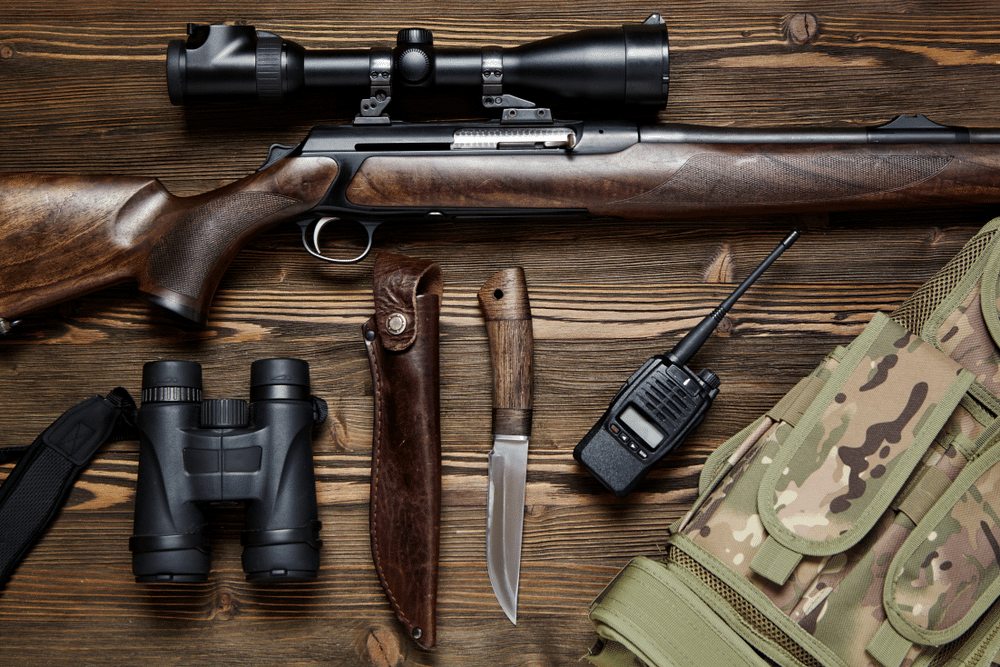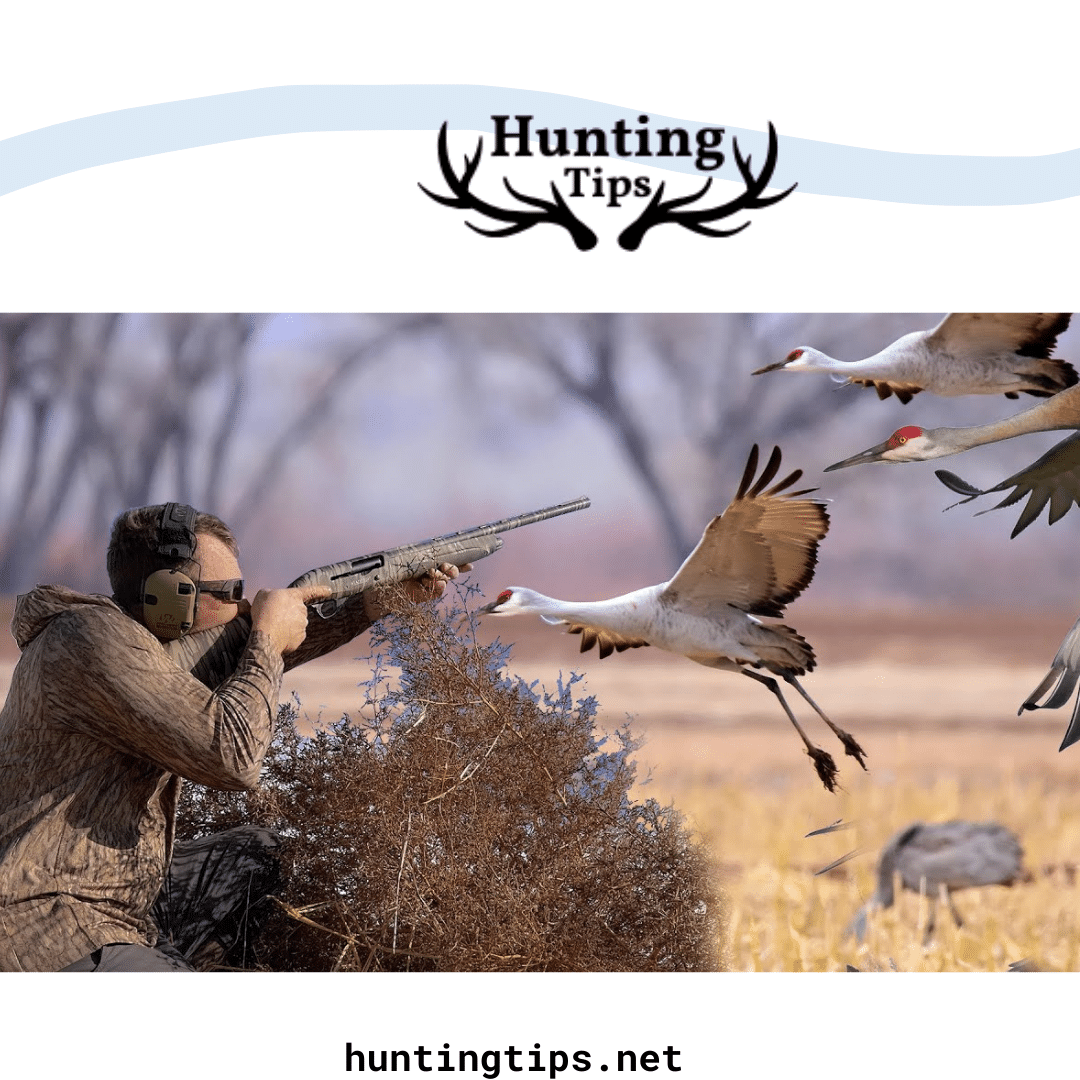Table of Contents
Sandhill crane hunting, often referred to as the “ribeye of the sky” due to the bird’s delectable meat, is a unique and rewarding experience for waterfowl hunters. These majestic birds are known for their keen eyesight, sharp hearing, and high intelligence, making them a challenging yet exhilarating target. Understanding expert strategies and techniques can significantly increase your harvest if you’re a seasoned hunter or new to crane hunting. Here’s an in-depth guide to help you master the hunt. Every strategy contains priceless advice to improve your hunting experience, from picking the best decoys to learning calling skills and comprehending crane behavior. Prepare to maximize your harvest and enjoy every hunting trip to the fullest. Let’s have a short look at the duck hunting techniques by experts.
1. Understanding Sandhill Crane Behavior

To hunt effectively, you must first understand the habits and behaviors of sandhill cranes. These large birds are incredibly wary and rely on their senses to evade predators, including hunters.
Habitat
Sandhill cranes favor open fields, wetlands, and agricultural areas with easy access to food. They often roost in shallow water overnight and travel to feeding grounds during the day. Look for regions with abundant grain crops like corn, wheat, or rice.
Feeding Patterns
Cranes are opportunistic feeders, foraging in fields and wetlands for grains, seeds, insects, and small animals. Early mornings and late afternoons are their peak feeding times, making these periods ideal for hunting.
Migration
Sandhill cranes are migratory birds, traveling long distances between their breeding and wintering grounds. Timing your hunt during their migration season is crucial. Learn the migration patterns in your region to identify the best hunting windows.
2. Preparing the Right Equipment

Successful crane hunting begins with having the right tools and equipment.
Firearms and Ammunition
- Shotgun: A 12-gauge shotgun is the standard choice for sandhill crane hunting due to its power and versatility.
- Choke: Use a full or modified choke to ensure tighter shot patterns at longer ranges.
- Ammunition: Steel or non-toxic shot is required by law. Use BB, BBB, or T-shot for sufficient knockdown power.
Decoys
- High-Quality Decoys: Realistic sandhill crane decoys are essential for luring these sharp-eyed birds. Full-body decoys with lifelike feather detail and paint schemes are most effective.
- Decoy Spread: Place your decoys in small groups or “family pods” to mimic natural crane behavior. Ensure proper spacing to avoid suspicion.
Blinds
- Concealment: Use layout blinds or A-frame blinds that blend seamlessly into the surrounding terrain. Cover the blinds with natural vegetation from the hunting area.
- Placement: Set your blind downwind of the decoys for optimal shooting angles as cranes approach.
3. Scouting and Location Selection

Scouting is a vital part of a successful sandhill crane hunt. Hunters organize their tactics carefully before they set out, frequently starting with scouting missions to obtain important information. These outings involve studying crane behavior, following their migration paths, and pinpointing ideal hunting grounds.
Pre-Hunt Scouting
- Identify Feeding Areas: Drive or use binoculars to locate fields where cranes are feeding. Look for telltale signs such as footprints, droppings, and feather debris.
- Roosting Sites: Cranes roost in shallow water. Identify these areas but avoid disturbing them, as it may push birds out of the region.
Decoy Setup
The decoy spread is essential to every successful sandhill crane hunting operation. Hunters must set up a captivating scene during crane season to draw these magnificent birds. This method involves putting decoys in appropriate locations to resemble feeding or sleeping sandhill cranes. It necessitates considering elements such as sunshine, wind direction, and the surrounding environment. Scouting involves more than just picking areas to set up a decoy spreading; it also involves examining the environment. Decoy spreads resemble a flock of cranes and draw the birds to the area set aside for hunting. To properly position decoys and maximize their effectiveness, scouts carefully consider the direction of the wind and geographical issues.
Weather Considerations
Hunting is often best during overcast, windy, or slightly rainy days. These conditions can make cranes less wary and more likely to approach decoy setups. Studying the feeding and roosting locations of sandhill cranes is another aspect of scouting. Hunters’ chances of a successful hunt are increased when they can predict the locations of the birds at different times of the day by analyzing these patterns.
Evidence of crane activity
Hunters also check for evidence of crane activity during scouting trips, such as feeding places, droppings, and tracks. These markers assist hunters in focusing their search and choosing the most advantageous areas for hunting. Scouting is important to successful sandhill crane hunting. Hunters can increase their chances of a successful hunt by learning more about crane behavior, locating good hunting areas, and properly placing decoy spreads.
4. Mastering the Calling Techniques

In the world of sandhill crane hunting, calling strategies are crucial, especially when pursuing an even bigger sandhill crane. Since these birds are extremely cautious and watchful, being skilled at calling is crucial to a successful hunt. Hunters and wildlife enthusiasts use various calling techniques to bring these elusive animals within range.
Effective calling can lure sandhill cranes into range, but it requires practice and finesse.
Mimic Natural Sounds
Sandhill cranes produce a distinct, rolling “kar-r-r-o-o” call. Using a high-quality crane call, mimic their vocalizations to attract passing birds. Practice the rhythm and pitch to make your calls realistic.
Timing and Volume
Avoid overcalling, as cranes are quick to recognize unnatural patterns. Start with soft, subtle calls as birds approach and increase volume only if necessary. Executing calling strategies successfully takes talent, patience, and a thorough knowledge of sandhill crane behavior and vocalizations. Using these techniques, hunters can help ensure the long-term management of sandhill crane populations while greatly increasing their chances of having a positive wildlife services experience. Watch this video for the calling techniques for the sandhill cranes.
Strategic Decoy Placement
Decoy placement can make or break your hunt. Sandhill cranes are cautious and will circle a setup before committing.
The Family Pod Method
Arrange decoys in small groups of three to five, mimicking a natural family structure. This setup puts cranes at ease and makes them more likely to land.
Landing Zone
Leave an open space in the middle of your decoy spread as a “landing zone.” Cranes prefer to land into the wind, so position your blind and decoys accordingly.
Concealment
To successfully hunt sandhill cranes, hunters must be skilled in concealment, which gives them the benefit of surprise and silence. Hunters frequently use various techniques to blend into the background when pursuing sandhill cranes effectively. For example, they can use natural flora or blinds that have been camouflaged to break up their shape and reduce visibility. With the help of these tactics, hunters can wait patiently for the ideal moment to make their move. Thus, hiding becomes a tool for encouraging sustainable activities and land stewardship and serves as a hunting tactic for sandhill cranes.
Shot Placement and Shooting Tips

Given the size and toughness of sandhill cranes, precise shot placement is crucial.
Aim for the Head and Neck
The head and neck are the most vulnerable areas of a sandhill crane. A clean shot to these areas ensures a humane kill.
Wait for the Right Moment
Avoid shooting at cranes that are too high or out of range. Wait until they are within 20 to 40 yards for the best shot opportunities.
7. Safety and Legal Considerations
Responsible hunting practices are essential for maintaining the sport’s integrity and conserving crane populations. Always prioritize safety when hunting sandhill cranes. Be aware of your surroundings, especially when hunting in groups or areas with other hunters. Use ear protection when shooting and follow all firearm safety guidelines.
Licensing and Permits
Ensure you have the appropriate licenses, tags, and permits required for sandhill crane hunting in your state or region.
Bag Limits
Adhere to established bag limits to avoid overharvesting and to preserve the species.
Ethical Hunting
Practice ethical hunting by taking clean shots and retrieving all downed birds. If a bird is wounded, dispatch it quickly and humanely.
8. Post-Hunt Practices
The reward of sandhill crane hunting lies not just in the harvest but in enjoying the fruits of your labor.
Field Dressing
Clean your birds promptly after the hunt to maintain meat quality. Remove the feathers, entrails, and any damaged parts.
Storage
Store the meat in a cooler with ice or in a refrigerator. Sandhill crane meat is prized for its rich, steak-like flavor, so proper handling is crucial.
Cooking Tips
Sandhill crane meat, often called “ribeye of the sky,” is delicious when grilled, smoked, or prepared in stews. Marinate the meat to enhance its natural flavor and tenderness.
Final Thoughts
Sandhill crane hunting is a test of patience, precision, and strategy. By understanding the birds’ behavior, investing in quality equipment, and employing expert techniques, you can maximize your harvest while enjoying the thrill of the hunt. Remember to hunt responsibly, respect wildlife, and savor the experience—because few pursuits rival the satisfaction of a successful day in the field. Happy hunting!


